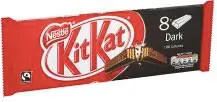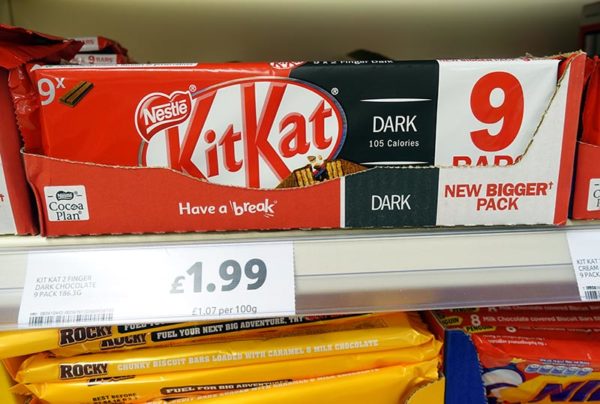Supermarkets and other retailers often seek ways to increase the price without losing customers. They have a few different options, depending on the good and its price elasticity of demand. In recent months, many supermarkets have managed cost increases by shrinking the size of the packet. Prices stay the same, but the price per gram of chocolate goes up. However, this practice of shrinkflation has come under scrutiny from the media and often leads to negative headlines when ‘exposed’.
Ways to increase price of goods
- If demand is price inelastic, firm doesn’t need to worry – consumers will keep buying, e.g. flowers on Valentine’s Day are sold at premium
- Shrinkflation – reduce the size of the good, so the cost per unit falls. In effect, the price per gram rises though consumer pays the same price.
- Repackage item in a new larger packet or new packaging to indicate new product design. With a product redesign, people may think they are getting a better, improved product and can rationalise the price increase.
- Combine price rise with a special offer, e.g. buy four and get 20% off. Therefore, if people are willing to buy in bulk they can avoid the price increase
- Premium decoy pricing. When firms offer very expensive products to make the ordinary products look better value.
Example of a bigger pack to justify price rises.
Today I was shopping at Tescos when I noticed my favourite brand of chocolate (dark chocolate Kit Kats) had increased in price from £1.50 to £1.99. As a compensation for the 33% increase in price, they introduced a new bigger pack of 9 bars.
The old pack was an 8 pack at £1.50 (often reduced in price to £1.00.)
So for a 12% increase in quantity – Tesco’s have managed to increase the price by 33%. That’s a good increase in the profit margin for Tesco (though there are rising costs of chocolate and other raw materials).
Did the bigger pack fool me?
No. It is quite a noticeable jump in price from £1.50 to £1.99. Especially because I usually wait for the pack to be discounted to £1.00. So today, it felt like a 100% price rise.
They should have pursued shrinkflation

If they had shrunk the size of the pack from 8 to 7, I may not have noticed. The price is much more memorable than the number of fingers.
Did I buy the multi pack Kit-Kats at £1.99?
No. On principle, I didn’t buy (even though I could easily afford). Furthermore, I’m sure at some time in the future they will offer this bigger 9 pack on sale at the old price of £1.50. Then I will stock up and hope I have the self-discipline to avoid eating all at once.
Evaluation of this method of increasing price
I don’t think this is a clever way of increasing price.
- The price increase is very noticeable.
- There is no sense of getting a new product. There is no redesign or promise of improved chocolate.
- The increase in pack size from 8 to 9, is not particularly desirable. Some people may prefer smaller packets rather than having a lot of chocolate bars in the cupboard. “As soon as you open them, they seem to go” – is a common refrain.
- Smaller packets may make it easy to ration chocolate consumption over time. In this regard, we get the worst of both worlds – higher prices and more restraint needed.
Related


That price increase technique. its sneaky but effective method.
On 19 August I purchased 12 bottles of Wine from Tesco due to them having 25% off 6 bottles or more, today (21/8/2019) I purchased a further 12 bottles of the same wine and when I returned home I checked my receipt only to find that they had increased the price of that same wine by £1.00 per bottle yet the 25% offer is in force (they have told me) until 26 August 2019. Can they legally do this ???